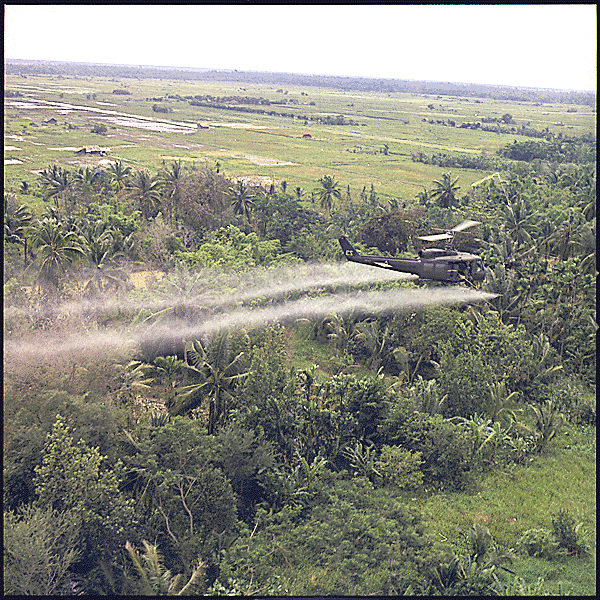Attention A T users. To access the menus on this page please perform the following steps.
1. Please switch auto forms mode to off.
2. Hit enter to expand a main menu option (Health, Benefits, etc).
3. To enter and activate the submenu links, hit the down arrow.
You will now be able to tab or arrow up or down through the submenu options to access/activate the submenu links.
Locator
Contact
Search
Agent Orange Exposure Locations


Note: Information on this page about a list of U.S. Navy and Coast Guard ships is no longer correct. It was correct at the time of newsletter publication. Find information for Veterans who served on open sea ships off the shore of Vietnam during the Vietnam War here.
Exposure to Agent Orange is recognized by VA in the following locations:
- Vietnam and Brown Water Veterans
The inland waterways of Vietnam are often referred to as “brown water” because of their muddy color. The naval vessels operating on them are referred to as the Brown Water Navy and/or Mobile Riverine Force. Those who made brief visits ashore and/or served on a ship that was operated on the inland waterways of Vietnam are often referred to as “Brown Water Veterans.” - Blue Water Veterans
The deep offshore waters of Vietnam are often referred to as “blue waters” and naval vessels operating on them are referred to as the Blue Water Navy. Blue Water Veterans are not presumed to have been exposed to Agent Orange or other herbicides unless they actually set foot in Vietnam (including for liberal leave or work detail) or served aboard ships on its inland waterways between January 9, 1962 and May 7, 1975. The Blue Water Navy operated large ships which were used to carry out their missions along the Vietnam coastal waters. Some offshore ships including hospital ships, harbor repair ships, mine sweepers, seaplane tenders, and destroyers sent crew members ashore. Veterans aboard these ships who can show they were on shore will be eligible for the presumption of exposure. - U.S. Navy and Coast Guard Ships in Vietnam
VA maintains an evolving list of U.S. Navy and Coast Guard ships associated with military service in Vietnam and possible exposure to Agent Orange based on military records. This includes ships of the Brown Water and Blue Water Navy that operated on Vietnam’s inland waterways, docked to shore or pier in Vietnam, or that delivered supplies or troops ashore. The alphabetized ships list is available at www.publichealth.va.gov/exposures/agentorange/shiplist/index.asp. - Korean Demilitarized Zone
Veterans who served in a unit operating along the Korean demilitarized zone anytime between April 1, 1968 and August 31, 1971, and who have a disease VA recognizes as associated with Agent Orange exposure, are presumed to have been exposed to herbicides. - Thailand Military Bases
Vietnam-era Veterans, including U.S. Air Force and Army Veterans, whose service involved duty on the perimeters of military bases in Thailand anytime between February 28, 1961 and May 7, 1975 may qualify for VA benefits. - Herbicide Tests and Storage Outside Vietnam
The Department of Defense gave VA a list of dates and locations outside of Vietnam where herbicides were tested and stored. To view the complete list, visit www.publichealth.va.gov/docs/agentorange/dod_herbicides_outside_vietnam.pdf.
For more information on each location, visit www.publichealth.va.gov/exposures/agentorange/locations/index.asp.
Be on the lookout!
VA contracts with the Institute of Medicine of the National Academy of Sciences to review evidence on long-term health effects of Agent Orange and other herbicides on Vietnam Veterans. The next report will be “Veterans and Agent Orange: Update 2016.” Check for updates at https://www.publichealth.va.gov/exposures/agentorange/publications/health-and-medicine-division.asp.




















